On 18 April we heard a concert associated with the Aurora Festival, at the Music Workshop Conservatorium of Music. There were three works on the program.
First, Gavin Bryars,
One Last Bar then Joe Can Sing (1986). I was reminded by the program notes that Gavin Bryers is best known for
Jesus Blood Never Failed Me Yet (1971) which I remembered as a tape loop of a frail voice intoning the words of the title. I don't know if I ever heard the whole piece which the note said ran for an hour, or if my vague memory of it did it justice, but it made me a bit apprehensive.
One Last Bar is written for a large percussion group, 5 players in all, including marimba and vibraphone and what looked like temple bells or small Balinese gongs. Towards the end the bells and the vibraphone were played with a bow.
The piece has a program of sorts: the program describes the title as “an amalgam of in jokes between the composer and himself". More reason for apprehension.
But the overall effect of the work was excellent. A visual metaphor that came to mind was that it created pools of sound. I didn't quite reach the reverie promised by the program note but headed in that direction. This impression was so strong that I was surprised when I re heard the work on the radio a few nights later to hear the characteristic repetitions of the minimalist style were so prominent.
Next was Micrographia by Michael Smetanin, head of the Composition and Music Technology Unit at the conservatorium. I hadn't previously heard of him or his work. Micrographia is scored for piano three violins, cello, bass, flute, oboe, clarinet, bassoon (& contra bassoon) trumpet, trombone, two horns and percussion. The percussion included two marimbas played with the hands rather than mallets or sticks. This work, in contrast to the first, created a sound pattern which seemed to make threads of music against a background of patterns of sound made by various combinations of instrumental sound which were fascinating to hear. The title of the piece comes from a reference to the microscopic work of Robert Hooke, and the gradual expansion of a phrase which begins the work. I didn’t hear this happening at the concert but it was apparent on listening to the broadcast. Yet another example of the need to hear works more than once – if only there was enough time.
The last work was the
Daniel Variations of Steve Reich composed in 2006. The work is a musical tribute to the journalist Daniel Pearl who was murdered in appalling circumstances by terrorist thugs in 2002. For a long time I have thought that some historical events are so dreadful that they defy reproduction in artistic work and make it almost impossible for the artist, writer of composer to avoid making the impression that the subject was chosen just to shock and enhance the status of the artist, in a way which wrongly makes use of the victims.
The Daniel Variations overcomes this problem completely. It is a remarkable and very moving work.
It is scored for 4 pianos, a string quartet, 2 clarinets, percussion including two vibraphones and a quartet of singers. The singers voices are amplified, and it seemed at the performance that this was done, at least in the first part of the work in a way which restricted the dynamic range of their singing. The work is also in the minimalist tradition, each movement incudes numerous repetitions of a single line, two taken from the Book of Daniel and two from the words of Mr. Pearl himself. These lines are also the titles of the movements.
1. I saw a dream. Images upon my bed & visions in my head frightened me
2. My name is Daniel Pearl
3. Let the dream fall back on the dreaded
4. I sure hope Gabriel likes my music, when the day is done.
Four grand pianos in a single performance space is worth seeing – and hearing; the sound produced by the unique combination of instruments was fascinating and powerful.
The vocal line in the last movement, I sure hope Gabriel likes my music, when the day is done, comes from a remark recalled by a friend of Daniel Pearl, who was a violinist, about his belief in a heaven.
The setting of these words makes them a powerful affirmation of Pearl’s life and memory and a magnificent defiance of the evil which overcame him.
Aurora Live Modern Music Ensemble Daryl Pratt, conductor. Conservatorium Music Workshop 18 April 2008
Broadcast - same program recorded at Penrith 20 April - ABC FM 22 April
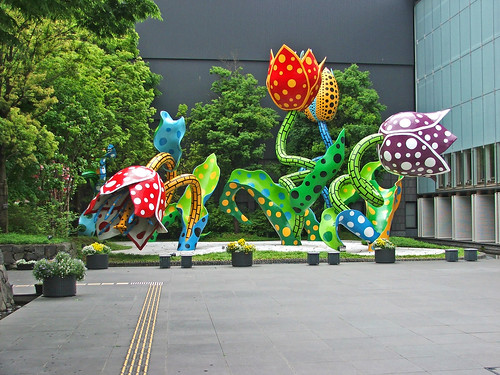

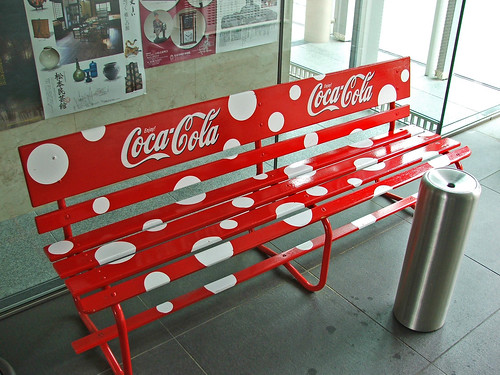

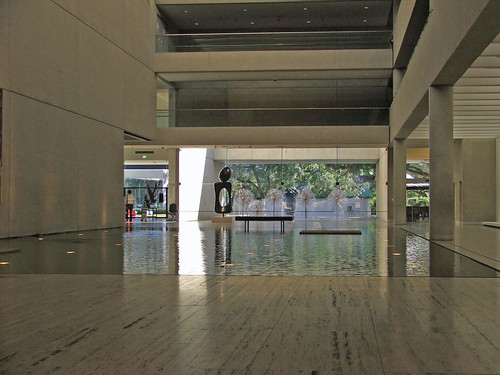
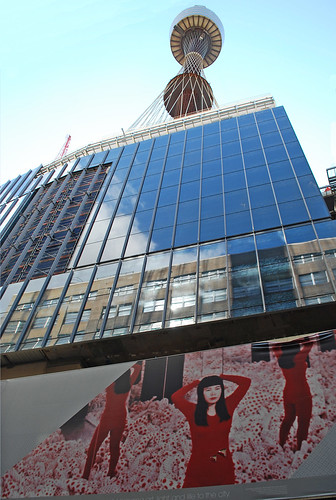
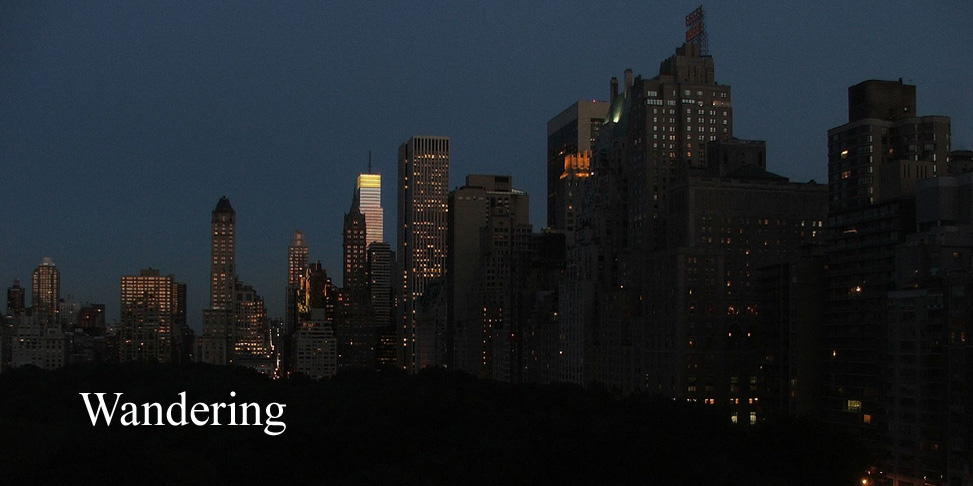
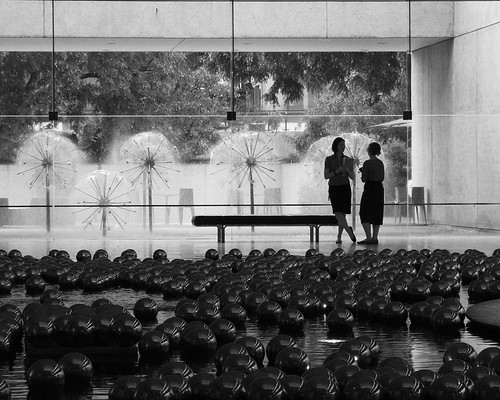




(Revised 6 September 2009)
I visited Brisbane for a commercial purpose but went down to the Queensland Art Gallery as well, mainly to see the exhibition Mountains and Streams, since I am taking an interest in Chinese Art at the moment by attending the lectures Literature and Legend at the Sydney gallery. The lectures on Chinese Art are part of series which moves on to Japanese Art later. I thought the Chinese lectures would be a useful prelude to the Japanese ones but despite their variable quality I found much interested in the history, art, and literature discussed. I found I had seen Mountains and Streams previously at the NGV in Melbourne where it originated but had almost no memory of it, attributable, I think, to my complete ignorance of Chinese art when I first saw it. So I saw it again with a little more insight.
But the highlight of my visit to the Queensland gallery was my discovery of Yayoi Kusama, a Japanese artist whose installation, Narcissus Garden, is a striking feature of the gallery itself. The Queensland gallery is new. I found it to be a splendid large and open space very well designed for the display of painting and sculpture.
The installation by Yayoi Kusama is a version of a work which she first showed in 1966 at the Venice Biennale; or rather outside it, since she had not been invited. It was a very effective action and brought attention not only to herself but also to the way in which official displays of modern and inventive art soon become as ossified and bureaucratic as anything else. At the Biennale Kusama first offered the individual mirror balls for sale at $2. When she was somehow prohibited from doing this she gave out leaflets praising her own work.
Other versions of this work have appeared in the Serpentine in London and the small boat lake in Central Park, NYC. From photographs, it seems that the mirror balls were set out on the grass when they first appeared at Venice but subsequently floating in water. The essence of the installation is the reflective balls themselves. It looks from photographs as if their surroundings at Brisbane have changed a little from time to time; and in other places they seem to be out of reach and more clumped together in the waters and lakes in which they are floating.
In Brisbane the accumulation of balls looks simple and elegant and attracts attention by the constant movement helped along by the notices calling for them to be touched gently.
I find that Kusama has been an influential artist for 50 years. She was born in Matsumoto in 1929 and traveled from Japan to the USA in 1958. She was soon in New York where she was active in painting, sculpture and the organization of happenings for some years. She was therefore involved in making installations and other similar works when the concept was truly innovative and she was able to work with originality and flair. It may still be possible to do this, but the passage of time has made so many of such things seem mundane and derivative.
Although not apparent in Narcissus Garden, Kusama has described her work as emerging from her mental illness: she says has had hallucinations since she was a child. She also says that her ability to produce artistic works is a therapy for her.
Kusama often appears in photographs of her work. In a picture of the installation at Venice she is seen lying on the ground amongst the metallic balls in a red jumpsuit. In more recent photographs she poses staring intently at the camera. I wonder about the border between mental illness and self promotion.
Or could it be a characteristic of Japanese artists who move to the west. I am reminded of the self portraits of Fujita staring languidly from the picture; and of his self promotional antics in Paris in the 1920s.
And I can now add Masami Teraoka whom I discovered in Melbourne even more recently. His MacDonald's Hamburgers Invading Japan / self portrait shows the same trait:
http://en.wikipedia.org/wiki/Image:Teraokaselfportrait.jpg
And so it was that in late May 2008, I made my way to Matsumoto, taking the super wide Shinano via Tsumago/Nagiso. I enjoyed my brief visit to Matsumoto. I missed a special retrospective exhibition of Kusama's work by only a week or so. However, as Matsumoto is her home town, the Matsumoto City Museum of Art maintains a permanent exhibition of her work. In fact, her Visionary Flowers (2002) dominates the front of the building; I imagine it was made for the site as the museum opened in that year.